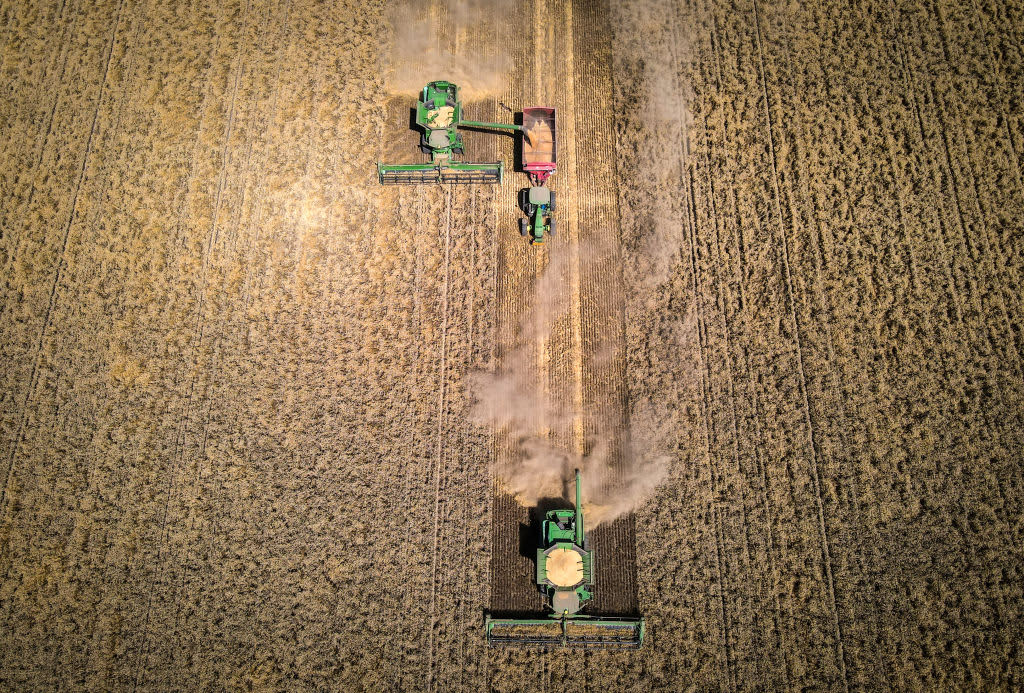
SINGAPORE — Australia is in an unfavorable position in its trade dispute with China, which has found alternative sources like the U.S. for supplies, according to S&P Global Platts.
China is currently importing a lot of produce from the U.S., including wheat, corn and soybeans, Andrei Agapi, Asia-Pacific associate pricing director for agriculture at Platts, told CNBC’s “Squawk Box Asia” on Tuesday.
That buying comes after Beijing agreed to make “substantial purchases” of U.S. manufacturing, agricultural and energy products, along with services, as part of the “phase one” trade agreement between the two economic powerhouses.
The analyst said China has the “potential to buy more” as the country looks to replenish its inventories and reserves. Agapi explained, “There is space for more suppliers, it’s not exclusively a U.S. game.”
“China does not strictly need the wheat and barley … from Australia. It’s more Australia that needs the Chinese market,” Agapi said.
A farmer operates a combine harvester as he unloads wheat into a grain cart during a harvest at a farm near Gunnedah, New South Wales, Australia, on Tuesday, Nov. 10, 2020.
David Gray | Bloomberg via Getty Images
One factor driving the appetite for agricultural purchases is China’s recovery from African swine fever, which decimated hog herds in the country and sent pork prices soaring for months until November. The economy has also largely bounced back from the coronavirus. As a result, Agapi said “feed demand is coming online quite aggressively.”
“Whatever is going to be the cheapest supply and the most plentiful supply, that’s going to be priced in,” he said.
That could bode well for Australia’s farmers, who are emerging from three consecutive years of droughts and are in a “fairly good moment to be competitive” as crop yields improve, Agapi explained. That gives farmers more flexibility to price their produce competitively lower.
But in May, China levied a hefty tariff on Australian barley, pricing the crop out of the Chinese market. That episode highlighted the importance for Australia’s exporters to diversify their markets, Agapi said.
The trade dispute between the two countries expanded over the weekend as China again slapped tariffs on Australian products, this time targeting the country’s wine exports.
“Australia had to scramble to find some homes for those cargoes, which some of them were already afloat and en route … for China,” Agapi said, in reference to the barley levies. “If a decision comes from China to hold any imports — if there’s no diversification — then the exports are suddenly left stranded.”
That does not necessarily mean that there are no buyers elsewhere for the crop. The analyst explained that Australia’s barley and wheat have been “historical very competitive” in places such as Indonesia and the Philippines in Southeast Asia and even in the Middle East.
“You can always find buyers,” Agapi said. “It’s a matter of price, essentially.”
Source: CNBC
